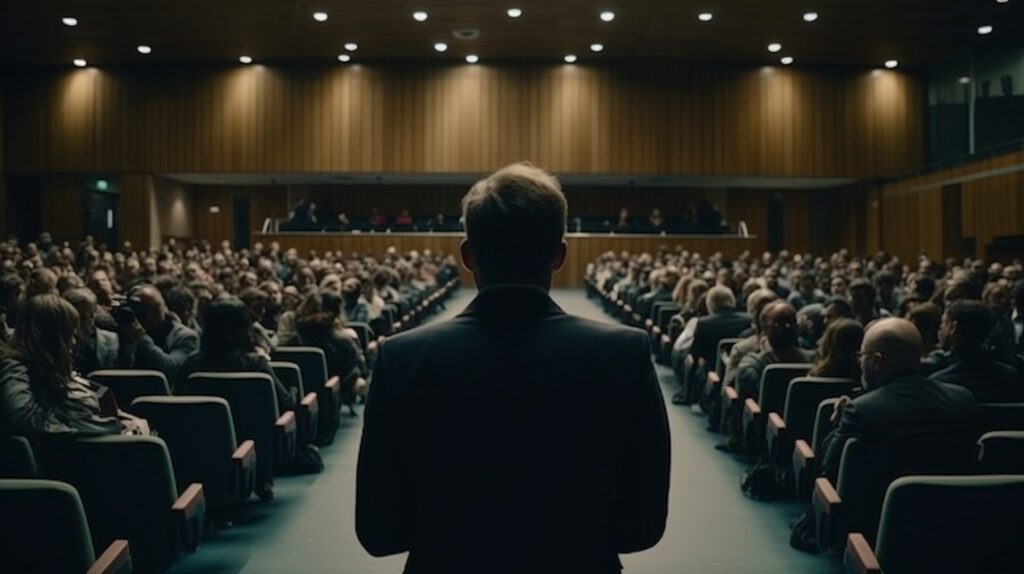Technical presentations are a critical part of the sales process. They communicate the value of your product, service, or solution and help to drive a successful sale. Even though many businesses use technical presentations, they often need help with creating them effectively because they need the right tools and skills.
Did you Know?
In B2B sales, storytelling can increase information retention by up to 22 times more than just facts, making complex products or services more relatable and memorable for clients.
Visuals are key in B2B presentations, with studies showing people remember 80% of what they see and do, making infographics and charts essential for conveying complex data effectively.
The B2B buying process often involves 6-10 decision-makers, necessitating sales presentations that address multiple concerns and viewpoints over a longer decision-making timeframe.
In this post, we’ll be covering some of the most important elements you need to create an impactful technical presentation that will help increase your chances for success on every sales call!
Audience

One of the most important aspects of creating your technical sales deck is ensuring that it’s focused on meeting the needs of your audience. This means segmenting them based on their technical knowledge and comprehension levels, tailoring content to meet those needs and comprehension levels, and engaging with them in real-time by asking questions about what they’re learning or how they feel about certain concepts.
In order to do this effectively, you must first understand who your audience members are and how many different types there are! Generally speaking, audiences can be divided into three categories: experts (those with extensive knowledge), novices (those who have little or no prior knowledge), and intermediates (those who fall somewhere between).
Content Creation and Structure

Key messages are the focus of your dynamic presentation and should be communicated early on, in a clear and concise manner.
The structure of your deck should be consistent with the overall message that you’re trying to convey. If you have multiple key messages, consider using a “pivot table” or “what-if analysis” approach so that each slide can stand alone without having to refer back to previous slides. This will make it easier for people who don’t have time or interest in reading through all of your slides and may even help them remember what they just saw!
While there are no hard rules about how much detail should be included, it’s important not to overdo it: too much information can overwhelm viewers and distract from what matters most (your key message).
Visual Design Principles
Visual design is a critical component of your technical sales deck. Visuals can help simplify complex information and make it easier for your audience to understand, which will make them more likely to listen and engage with the material.
If you have a lot of data points or figures in your great presentation, consider using diagrams or infographics to illustrate these points visually. For example, if you’re explaining how an algorithm works and its benefits over traditional methods (such as using bar charts), consider using an illustration that shows the difference between these two approaches side by side–it’ll make everything much clearer!
Another way visuals can enhance the impact of your creative presentation is through consistent branding elements such as fonts and colors used throughout all slides within each section (e.g., Introduction). This helps reinforce brand recognition across multiple types of content so people know who created them when they see something branded from one company versus another one later on downstream somewhere else online where there wasn’t any obvious connection between those companies before now.”
Storytelling in Technical Presentations
The goal of a technical presentation is to explain a complex process or concept in terms of its components, while also giving the audience an understanding of how those components relate to each other. A story flow that aligns with your data can help you achieve this goal.
For example, if your deck is about how an algorithm works, one way to organize it would be by breaking down the algorithm into steps and explaining each step individually (1) before moving on to explain how those steps fit together (2). This allows you
to give context for why each step was taken and how it fits into the larger picture (3).
Presentation Delivery Techniques
- Rehearse your presentation. It’s easy to get caught up in the excitement of your technical content and rush through it, but if you’re giving a presentation that includes complex concepts or new ideas for a group of people who aren’t familiar with them, you’re going to want them all on board with what you’re saying. Take time out before the big day to practice your delivery until it flows smoothly and clearly conveys what needs to be conveyed.
- Use non-verbal communication wisely but don’t overdo it! Nonverbal communication can make or break a presentation; use gestures sparingly when presenting technical material so as not to distract from or confuse the audience. Hand gestures should be limited mostly just pointing at objects on screen. Eye contact should be maintained throughout most of the speech
Leveraging Technology
There are a number of tools and software programs that can help you create an interactive and engaging technical sales deck. Some of these include:
- Data visualization tools, such as Tableau or Qlikview, which allow you to create interactive presentations with live data.
- Virtual presentation software like Simulcast, GoToMeeting or Google Hangouts for remote presentations.
Call to Action
Your call to action should be clear, compelling, and easy to follow. A great way to accomplish this is by using a “headline” that summarizes your key message in one sentence at the beginning of your slide deck. For example: “We will help you increase revenue by 20% in 12 months.” This headline helps ensure that everyone knows what they are signing up for when they attend your presentation.
Once you’ve established this key message with a strong headline, ensure every subsequent slide builds upon it by highlighting why their business needs what you’re offering them (this could be as simple as showing an image or SVGs of them sitting behind their desk). Finally, end on an uplifting note by reminding them how much time they’ll save or money they’ll make if they work with you!
Conclusion
We hope that you now have a better understanding of what a technical presentation is, and how to improve your technical sales deck. Take a look how CustomShow could help in your sales situations.

